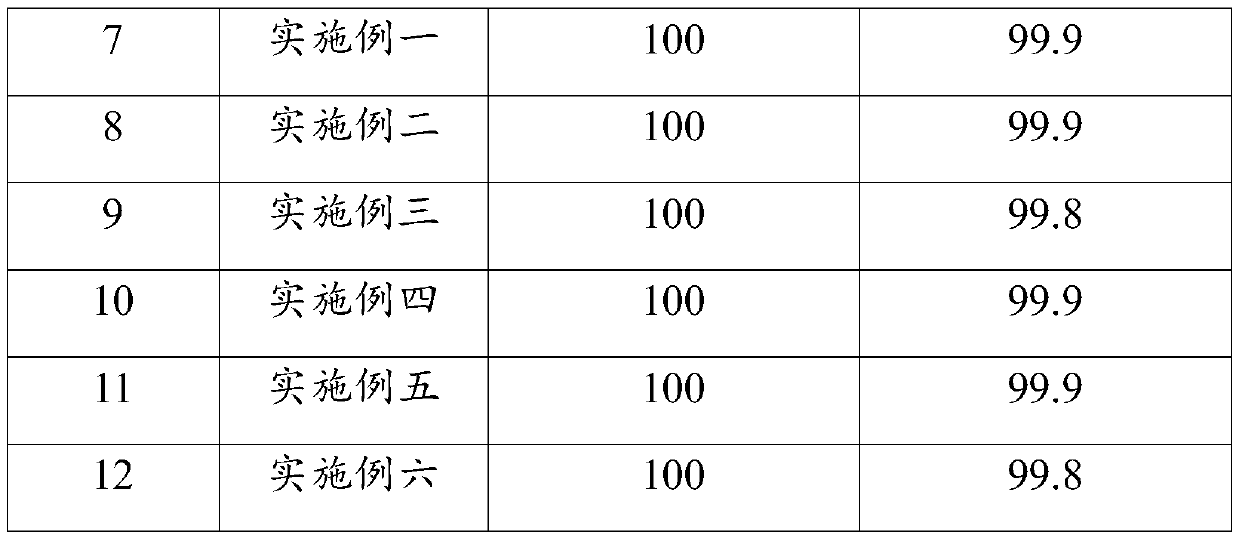A kind of method preparing halogenated aniline by catalytic hydrogenation of halogenated nitrobenzene
A halogenated nitrobenzene, catalytic hydrogenation technology, applied in the preparation of amino compounds, catalyst activation/preparation, preparation of amino hydroxyl compounds, etc., can solve problems such as catalytic performance decline, sulfide loss, etc., to achieve improved quality, good stability , reduce the effect of separation and purification
- Summary
- Abstract
- Description
- Claims
- Application Information
AI Technical Summary
Problems solved by technology
Method used
Image
Examples
Embodiment 1
[0033] Weigh 10g of carbon material, the particle size of the carbon material is 800 mesh, and the specific surface area is 1400m 2 / g, the average pore diameter is 3nm, and the ash content is 0.3wt%. It is mixed with 0.6g elemental sulfur evenly, and treated at 1000°C for 5h under nitrogen atmosphere to obtain sulfur-doped carbon material. Then, the above-mentioned sulfur-doped carbon material was prepared into a slurry at a temperature of 80° C. in 100 ml of deionized water, and 10 ml of H 2 PdCl 4 solution (the Pd content is 0.02g / ml), stirred for 2.5h; the pH value of the solution was adjusted to 8 with 10wt% NaOH solution, and the temperature was lowered to room temperature, filtered, and the filter cake was washed to neutrality with deionized water; The filter cake was configured into a slurry at 80°C, 2ml of 85% hydrazine hydrate solution was added dropwise, stirred for 2 hours, filtered, the filter cake was washed with deionized water until neutral, and vacuum-dried a...
Embodiment 2
[0035] Weigh 10g of carbon material, the particle size of the carbon material is 1000 mesh, and the specific surface area is 1200m 2 / g, the average pore diameter is 2.5nm, the ash content is 3.0wt%, it is placed in H 2In the S / Ar mixed gas (volume ratio 1 / 10), the mixed gas flow rate is 2 L / h, and the sulfur-doped carbon material is obtained by treating at 800° C. for 10 h. Prepare the above-mentioned sulfur-doped carbon material in 100ml of deionized water to make a slurry at a temperature of 60°C, and slowly add 6ml of H 2 PtCl 6 solution (Pt content is 0.05g / ml), stirred for 2h; the pH value of the solution was adjusted to 8.5 with 10wt% KOH solution, and the temperature was lowered to room temperature, filtered, and the filter cake was washed to neutrality with deionized water; The cake was prepared into a slurry at 60°C, 10ml of formaldehyde was added dropwise, stirred for 2 hours, filtered, the filter cake was washed with deionized water until neutral, and dried in va...
Embodiment 3
[0037] Weigh 10g of carbon material, the particle size of the carbon material is 100 mesh, and the specific surface area is 1600m 2 / g, average pore diameter 10nm, ash content 0.1wt%, mix it with 4g thiophene evenly, and treat it at 1200°C for 3h under a helium atmosphere to obtain a sulfur-doped carbon material. Prepare the above-mentioned sulfur-doped carbon material in 100ml of deionized water to make a slurry at a temperature of 40°C, and slowly add 10ml of RuCl 3 solution (the Ru content is 0.005g / ml), stirred for 4h; the pH value of the solution was adjusted to 9 with ammonia water, and the temperature was lowered to room temperature, filtered, and the filter cake was washed with deionized water until neutral; Prepare a slurry, add dropwise 30ml of formic acid, stir for 4h, filter,
[0038] The filter cake was washed with deionized water until neutral, and dried in vacuum at 80° C. to obtain a sulfur-doped carbon material-supported ruthenium catalyst.
PUM
| Property | Measurement | Unit |
|---|---|---|
| particle size | aaaaa | aaaaa |
| pore size | aaaaa | aaaaa |
| particle size | aaaaa | aaaaa |
Abstract
Description
Claims
Application Information
 Login to View More
Login to View More - R&D
- Intellectual Property
- Life Sciences
- Materials
- Tech Scout
- Unparalleled Data Quality
- Higher Quality Content
- 60% Fewer Hallucinations
Browse by: Latest US Patents, China's latest patents, Technical Efficacy Thesaurus, Application Domain, Technology Topic, Popular Technical Reports.
© 2025 PatSnap. All rights reserved.Legal|Privacy policy|Modern Slavery Act Transparency Statement|Sitemap|About US| Contact US: help@patsnap.com



